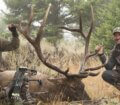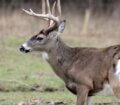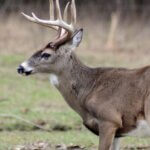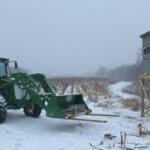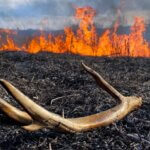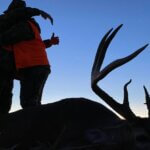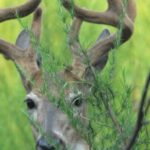Editor’s Note: Terry and Mark Drury have owned Drury Outdoors for the last almost 35 years, and today produce and direct several TV shows, including “Thirteen,” “Natural Born,” “Bow Madness” and “Critical Mass: Evolve.” They’ve consistently been able to take older-age-class bucks every year on the properties they own and manage for wildlife. Terry Drury shares their deer strategies. Also many states offer free assistance through biologists in the states’ Technical Assistance Units about improving properties for deer.
Analyze Soil for pH, Lime and Fertilizer
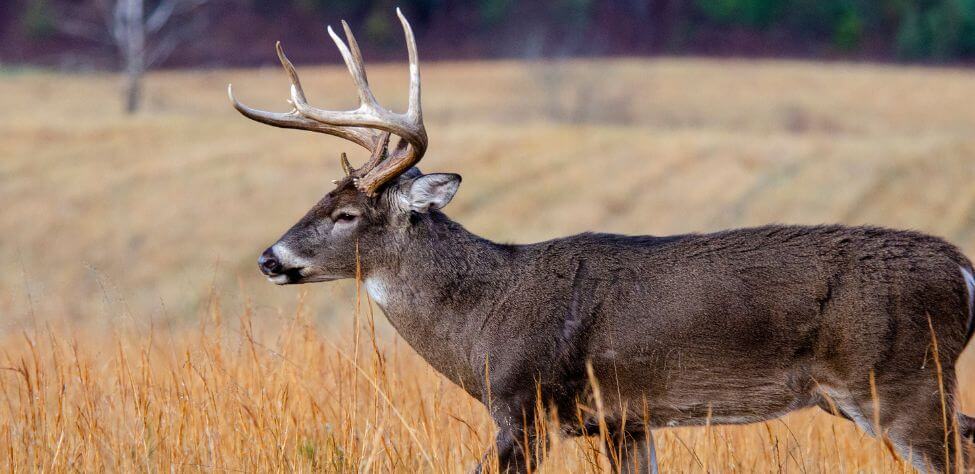
Our bow deer season starts with nine months of preparation – in January and February I know it’s too late for you now to do this since some states start bowhunting in August. But you can plan what you’ll do in January and February and the spring of 2024. The when deer season arrives, we’re ready to hunt. The reason for that is deer hunting and turkey hunting are not only our favorite sports, they’re also our chosen professions for our TV shows and social-media presence. In the early, early spring, we’ll start putting lime and fertilizer on our green fields, after doing soil tests to see how much lime and fertilizer we need to use per acre on each of the fields and hunting plots we have on our lands. We want to get as close as we possibly can to the proper soil pH to make sure that the crops we plant are extremely palatable to the deer and turkeys on our properties.
Check Out Tree Stand Sites and Fences
While we plant these fields and hunting plots in the spring and in the fall, we’ll also begin checking and improving all of our tree-stand sites in the early spring. We’ll trim shooting lanes and cut dead trees and non-commercial trees in the spring. Then we’ll do another round of cutting, trimming and pruning in the fall before hunting season begins. We go back through this same process again in the fall because often there will be sprouts, young trees and limbs that need to be trimmed from their summer growth.
We check the straps and the safety lines on all of our tree stands and do whatever maintenance work we feel is necessary to make the stands as safe and as quiet as possible. Our tree steps, ladders and any devices we use when we’re hunting off the ground will be inspected at this time too. In the spring, I go all the way around my property studying my barbed-wire fences to ensure no trees or limbs have fallen on my fence between us and our neighbors. Many of our neighbors have cattle, and the only way to be sure that your neighbor’s livestock doesn’t come onto your property and eat-up your green fields is to keep a watchful eye on your fences.
Put Out Supplements
During the spring and summer (up until the fall) we put out supplements – at critical times for improving the health of our fawns, does and bucks. In certain areas of the country, supplements are not legal to use. So, you’ll need to check with your fish and game commission for your region before you put-out supplements. But many of the counties in Missouri where Mark and I live allow supplements of any kind to be put out, as do many other sections of the country. We use Ani-Logics’ wide variety of deer supplements designed to help deer health and growth. These specific supplements were designed by veterinarians for whitetails. You may want to go online, look at the supplements the company has available and see how they can help you improve your whitetails’ health. Now remember, supplements aren’t legal to put out in all counties or in all states because of CWD (chronic wasting disease). We start putting these supplements out in February, as soon as the deer start dropping their antlers because these supplements help antler growth as well as provide other nutritional benefits. We also use the supplements to draw deer into the areas where we have trail cameras to begin to census our deer herd during the antler-growing and the fawning times of the year.
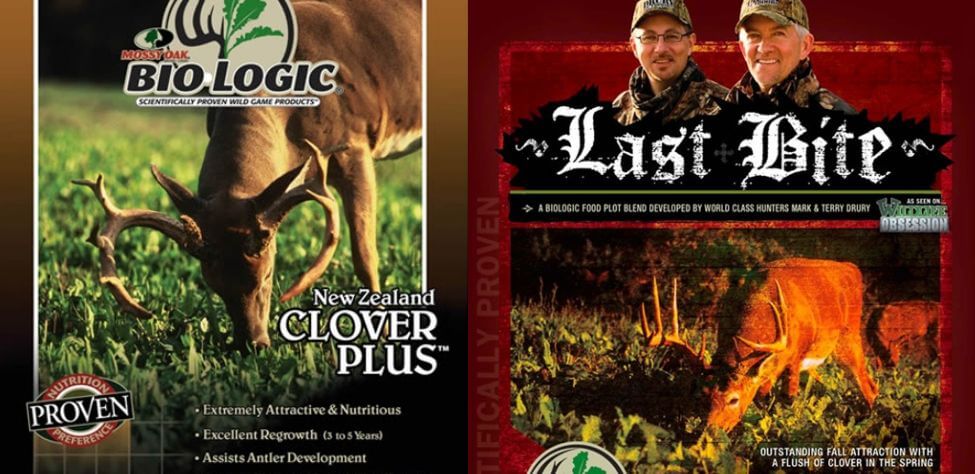
Use Trail Cameras and Cell Phone Service
We usually have our trail cameras set-up within bow range of where we plan to hunt. When we start checking our tree stands and our fences, we also check our trail camera SD cards, and we’ll probably put in new batteries. We also take lens wipes with us to make sure our cameras’ lenses are clean, and we’ll confirm that everything about the camera is functioning as it should be. Another thing we want to check is that we have cell service in the places where we’ve put our cameras. We like using Reconyx Cameras because we can pay $5 per camera, and each of them has its own way of reporting to us when deer or turkeys walk in front of them. They’re not linked together like some camera systems are, however. With cameras that are linked together, if one camera malfunctions, you typically don’t get any of the pictures, not only from that camera, but from any of the cameras you have linked to that system. Even in areas where there’s bad cell service, we still get pretty-good pictures from our Reconyx cameras. We update our cameras as new technology comes to the marketplace.
A nice feature of these Reconyx cameras is that we can get our pictures directly from the cameras in the woods, but those pictures are also sent directly to our cell phones. We’ll get notifications of a new picture from every one of our cameras any time a deer walks in front of it. It’s great that we’re able to check every camera remotely to see how-much battery life we have, to change the view and to see when the lenses on these trail cameras need attention. I’m amazed at the technology that’s been implemented in the new trail cameras available for outdoorsmen today.
Tomorrow: How Trail Cameras Help Hunt Deer

How to Hunt and Take Big Buck Deer on Small Properties
In this book, you’ll hear from 14 hunters who either have gained permission or leased properties as small as six acres to as much as 250 acres, and how they consistently take older-age-class bucks off these little lands.
VERSIONS: AUDIBLE, KINDLE & PRINT

Jim Crumley’s Secrets of Bowhunting Deer
Using a black magic marker and a gray work jumpsuit, Jim Crumley of Buchanan, Virginia, drastically changed the nature and purpose of hunting camouflage when he created the first sportsman’s camouflage – Trebark. Crumley’s love of bowhunting and his desire to be more invisible changed hunting clothing forever.
In this hunting guide, he shares the wisdom that he’s learned throughout his lifetime about how to be a hunter, how to find a deer lease, how to scout for deer, and more.
Special features include how to:
- Have a magic 60 acres to hunt
- Decide the best equipment to use
- Find deer year-round
- Locate land to hunt
- Know the best place to put your tree stand
- Get bucks within bow range
VERSIONS: AUDIBLE, KINDLE & PRINT

How to Hunt Deer Like a Pro
How do you know if the land you hunt has a trophy deer on it? Wildlife manager Bob Zaiglin, of Uvalde, Texas and Jim Crumley, the father of modern-day hunting camouflage, tells you how to find out. GPS can make finding and taking that trophy buck easier. This hunting guide will teach you how to hunt big bucks where no one else can find them, how to call deer, and how to become versatile as a deer hunter, so that if one deer tactic doesn’t work, another one will.
In the chapter, “How to find Bucks at Scrape,” Dr. Keith Causey, retired professor of Wildlife Science at Auburn University, describes the best way to hunt a scrape.
Brad Harrison of Neosho, Missouri, is a nationally-known videographer, professional deer hunter and master at calling deer. Another master is Will Primos of Primos Game Calls. These two experts will tell the best deer calls and when to use them in this book.
And for over 20 years, Bo Pitman, lodge manager of White Oak Plantation, has been studying deer movement patterns. He explains what types of conditions are best for predicting deer movement.
VERSIONS: AUDIBLE, KINDLE & PRINT

Deer hunting and deer hunters are drastically changing each year. To learn new techniques for hunting deer and have more places to hunt, I’ve interviewed some of the best deer hunters in the nation and share their tactics in How to Hunt Deer Like a Pro: Volume II.
In Chapter 10, Jacob Lamar tells you his tactics for consistently taking older-age-class bucks on public lands in several states. Chapter 11, Bob Walker explains how to find places on public lands where you can hunt that 99 percent of the other hunters never have considered hunting. The Bonus Chapter with David Ramey tells you how, where, when and with what equipment to take big Kansas bucks on public lands by hunting in 100-degree weather when others won’t hunt.
Chapter 13, Mark Drury, his family and his guests take mature bucks every season by having more small places to hunt rather than one large property. Drury explains the strategy of having satellite farms to hunt that only may be 50-150 acres each or less. Chapter 15, Pat Reeve, who hunts far-northern states and Canada, says, “I don’t like hunting for mature bucks until the weather is 20 degrees or less.” Chapter 4, Dr. Larry Marchinton says that funnels are the most-reliable stand sites to hunt for big bucks and tells why.
VERSIONS: AUDIBLE & PRINT

